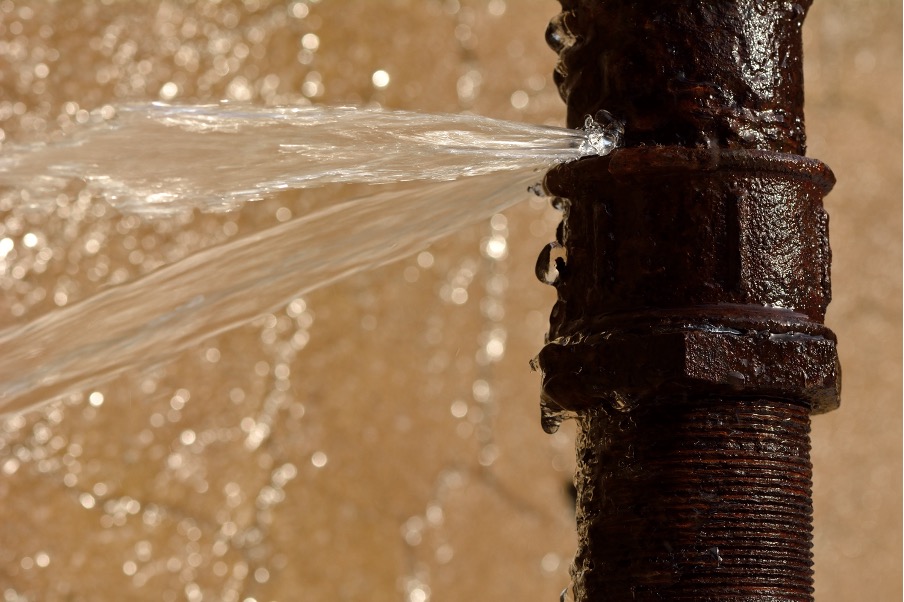Exactly how to Find and also Fixing Water Leaks-- A Comprehensive Overview
Exactly how to Find and also Fixing Water Leaks-- A Comprehensive Overview
Blog Article
Just how do you really feel when it comes to Detecting hidden plumbing leaks?

Early discovery of leaking water lines can mitigate a possible catastrophe. Some small water leakages may not be noticeable.
1. Analyze the Water Meter
Every residence has a water meter. Inspecting it is a surefire manner in which aids you find leakages. For starters, shut off all the water resources. Guarantee no person will flush, make use of the faucet, shower, run the washing device or dish washer. From there, go to the meter and also watch if it will certainly change. Given that nobody is utilizing it, there ought to be no movements. That indicates a fast-moving leak if it moves. If you identify no changes, wait a hr or 2 and also inspect back again. This suggests you may have a slow leakage that might also be underground.
2. Check Water Usage
Analyze your water bills as well as track your water usage. As the one paying it, you need to notice if there are any inconsistencies. If you detect sudden changes, despite your consumption being the same, it implies that you have leaks in your plumbing system. Keep in mind, your water expense must fall under the very same array every month. A sudden spike in your bill suggests a fast-moving leakage.
On the other hand, a consistent rise on a monthly basis, despite the same behaviors, shows you have a slow-moving leak that's also gradually escalating. Call a plumber to extensively check your property, particularly if you really feel a cozy location on your floor with piping beneath.
3. Do a Food Coloring Test
30% comes from commodes when it comes to water usage. Test to see if they are running appropriately. Drop specks of food color in the tank and wait 10 minutes. There's a leakage between the storage tank and dish if the shade in some way infiltrates your bowl throughout that time without flushing.
4. Asses Outside Lines
Don't fail to remember to check your exterior water lines as well. Must water leak out of the connection, you have a loose rubber gasket. One little leakage can lose heaps of water as well as surge your water bill.
5. Evaluate the situation and also check
Property owners should make it a routine to check under the sink counters and also even inside closets for any type of bad odor or mold and mildew growth. These 2 red flags suggest a leakage so timely focus is needed. Doing regular evaluations, also bi-annually, can conserve you from a significant trouble.
Examine for discolorations and damaging as the majority of devices as well as pipelines have a life expectancy. If you presume dripping water lines in your plumbing system, don't wait for it to intensify.
Early discovery of dripping water lines can reduce a prospective calamity. Some tiny water leaks may not be noticeable. Examining it is a proven way that helps you find leaks. One small leakage can lose bunches of water and spike your water bill.
If you suspect leaking water lines in your plumbing system, do not wait for it to intensify.
WARNING SIGNS OF WATER LEAKAGE BEHIND THE WALL
PERSISTENT MUSTY ODORS
As water slowly drips from a leaky pipe inside the wall, flooring and sheetrock stay damp and develop an odor similar to wet cardboard. It generates a musty smell that can help you find hidden leaks.
MOLD IN UNUSUAL AREAS
Mold usually grows in wet areas like kitchens, baths and laundry rooms. If you spot the stuff on walls or baseboards in other rooms of the house, it’s a good indicator of undetected water leaks.
STAINS THAT GROW
When mold thrives around a leaky pipe, it sometimes takes hold on the inside surface of the affected wall. A growing stain on otherwise clean sheetrock is often your sign of a hidden plumbing problem.
PEELING OR BUBBLING WALLPAPER / PAINT
This clue is easy to miss in rooms that don’t get much use. When you see wallpaper separating along seams or paint bubbling or flaking off the wall, blame sheetrock that stays wet because of an undetected leak.
BUCKLED CEILINGS AND STAINED FLOORS
If ceilings or floors in bathrooms, kitchens or laundry areas develop structural problems, don’t rule out constant damp inside the walls. Wet sheetrock can affect adjacent framing, flooring and ceilings.
https://www.servicemasterbyzaba.com/blog/how-to-detect-water-leakage-in-walls/

I found that blog entry on Top leak detection hacks while browsing the web. Sharing is good. Helping others is fun. Thank you for going through it.
Report this page